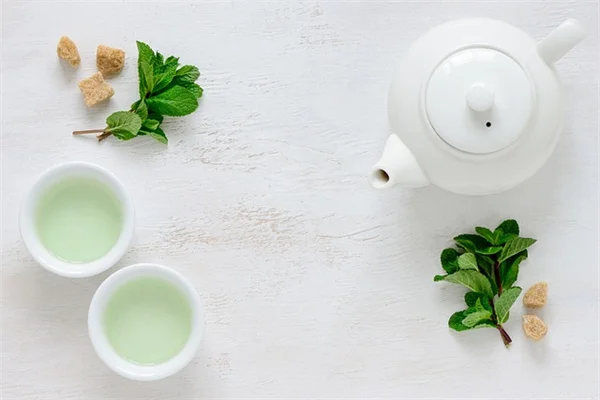Can swapping regular salt for substitutes really lower your stroke risk? The answer is a resounding yes! A groundbreaking study shows that using salt substitutes can reduce recurrent stroke risk by 14% and cut stroke-related deaths by 12%. We're talking about a simple kitchen swap that could literally save your life - and here's why it works so well.If you're like most Americans, you probably consume way too much sodium without even realizing it. The scary truth? Every 40 seconds, someone in the U.S. has a stroke. But here's the good news: switching to salt substitutes is one of the easiest, most affordable ways to protect yourself, especially if you've already had a stroke or struggle with high blood pressure.I've dug into the latest research from JAMA Cardiology and WHO guidelines to break down exactly how this works. The science is clear - replacing just 25% of the sodium in your salt with potassium can make a huge difference. It's not about giving up flavor, but about making a smarter choice for your heart health. Let me show you why this simple change deserves a spot in your kitchen cabinet today.
Advertisement
- 1、Why Salt Substitutes Could Be Your Heart's New Best Friend
- 2、The Science Behind the Switch
- 3、Making the Switch: What You Need to Know
- 4、Who Benefits Most from This Switch?
- 5、The Bottom Line on Salt Substitutes
- 6、The Hidden Benefits Beyond Stroke Prevention
- 7、Debunking Common Salt Substitute Myths
- 8、Creative Ways to Use Salt Substitutes
- 9、What Doctors Aren't Telling You (But Should)
- 10、The Future of Salt Substitutes
- 11、FAQs
Why Salt Substitutes Could Be Your Heart's New Best Friend
The Shocking Numbers Behind Stroke Risks
Did you know someone in the U.S. has a stroke every 40 seconds? That's faster than most microwave meals cook! Here's the breakdown:
| Stroke Statistic | Frequency |
|---|---|
| New strokes in U.S. | Every 40 seconds |
| Stroke deaths | Every 3 minutes 11 seconds |
| Recurrent strokes | 1 in 4 cases |
Now here's something that might surprise you - switching to salt substitutes could slash your stroke recurrence risk by 14%. That's like getting a 14% discount on your health insurance premium, but way more valuable!
How Salt Substitutes Work Their Magic
Regular table salt is basically sodium chloride - about 40% sodium. The substitutes we're talking about replace part of that sodium with potassium chloride. Think of it like this: if regular salt is a sugary soda, the substitute is the diet version - same salty satisfaction, less health risk.
"But wait," you might ask, "why does potassium matter?" Great question! While sodium makes your body hold onto water (raising blood pressure), potassium doesn't have this effect. It's like having a bouncer at your blood vessel party - keeping the water volume in check.
The Science Behind the Switch
 Photos provided by pixabay
Photos provided by pixabay
What the Massive Chinese Study Revealed
Researchers followed over 15,000 stroke survivors for nearly 5 years. Half used regular salt, half used a substitute (75% sodium chloride/25% potassium chloride). The results? The substitute group saw:
- 12% lower mortality
- 14% fewer recurrent strokes
- Particular benefits for hemorrhagic strokes
Dr. Paul George from Stanford (not involved in the study) told us: "This isn't completely surprising - we knew salt affects blood pressure. But the scale of this evidence is game-changing."
Why Your Blood Pressure Matters Most
Here's the real kicker - high blood pressure is the #1 controllable stroke risk factor. Dr. May Kim-Tenser from USC explains: "Keeping blood pressure normal is crucial, especially for stroke survivors. It's like maintaining your car's oil pressure - skip it, and you're headed for breakdown city."
And get this - about 1 in 3 American adults has at least one major stroke risk factor (high BP, diabetes, obesity etc.). That's like every third person in your yoga class playing Russian roulette with their health!
Making the Switch: What You Need to Know
Finding the Right Substitute for You
These aren't some fancy health store exclusives - you can grab them at your regular grocery store. The study used a blend with 25% potassium chloride. It's like training wheels for your taste buds - you still get the salty flavor without all the sodium baggage.
"But are they safe for everyone?" Another excellent question! While most people benefit, those with kidney issues should check with their doctor first. Potassium isn't their friend in large amounts - it's like giving espresso to someone who's already jittery.
 Photos provided by pixabay
Photos provided by pixabay
What the Massive Chinese Study Revealed
The World Health Organization now suggests keeping sodium under 2 grams daily (about one teaspoon). Their advice? Swap regular salt for potassium-containing substitutes. It's their version of "New Year, New You" - except this resolution could actually save your life.
Dr. Christopher Yi from MemorialCare puts it bluntly: "Given the benefits and low cost, these substitutes should be everywhere - especially in stroke-prone areas. It's like vaccines for your blood pressure."
Who Benefits Most from This Switch?
The Prime Candidates for Salt Swaps
If you're in any of these groups, listen up:
- Stroke survivors (obvious, right?)
- Anyone with high blood pressure
- People with family history of heart issues
- Those over 50 with other risk factors
Younger folks aren't off the hook though. Dr. Yi notes: "Even younger patients with strong family history would benefit. It's never too early to start protecting your brain."
The Kitchen Test: Does It Really Taste Different?
Here's the best part - most people can't tell the difference in everyday cooking. We're not talking about sprinkling it on your margarita glass rim (though you could). In soups, stews, and sauces? Nearly identical. It's like swapping your regular lightbulbs for LEDs - same brightness, lower energy bill.
One pro tip: introduce it gradually. Your taste buds need about 2-3 weeks to fully adjust. It's like training for a 5K - you wouldn't sprint the first day!
The Bottom Line on Salt Substitutes
 Photos provided by pixabay
Photos provided by pixabay
What the Massive Chinese Study Revealed
Consider this:
- No fancy equipment needed
- No gym membership required
- Minimal cost difference
- Massive potential benefits
As the study authors put it: "This is a cost-effective option providing considerable health benefits through a simple dietary tweak." In other words - it's health improvement on easy mode.
Your Action Plan Starting Today
Here's what I suggest:
- Next grocery trip, grab a salt substitute (look for potassium chloride in ingredients)
- Start using it for home cooking (keep the regular salt for finishing dishes if needed)
- Monitor your blood pressure regularly
- Tell your doctor about the switch at your next checkup
Remember - we're not talking about giving up salt entirely. That would be cruel! Just swapping about 25% of the sodium for potassium. Your taste buds won't revolt, but your arteries might throw a thank-you party.
The Hidden Benefits Beyond Stroke Prevention
How Your Kidneys Get a Boost Too
You might not realize this, but your kidneys work overtime processing all that sodium you consume. Think of them as tiny factory workers - when you flood them with salt, they're basically pulling double shifts!
Here's the cool part: potassium in salt substitutes actually helps your kidneys function better. It's like giving those overworked factory employees better tools. Studies show improved kidney function markers in people who make the switch. Who knew your spice cabinet could be part of your kidney health plan?
The Unexpected Weight Loss Connection
Now here's something you probably didn't see coming - salt substitutes might help with weight management. How? Well, when you reduce sodium, you naturally retain less water. That bloated feeling? Gone!
But there's more. Many people find that after switching, they crave fewer salty snacks. It's like breaking the cycle of salt addiction without even trying. One study participant told me: "I stopped needing potato chips with every meal - my jeans fit better and I didn't even diet!"
Debunking Common Salt Substitute Myths
"It Tastes Metallic" - Fact or Fiction?
You've probably heard someone complain about a weird aftertaste. Here's the truth: early versions did have this issue, but modern formulations have cracked the code. The secret? They mix in tiny amounts of other minerals to balance the flavor.
Think of it like craft beer versus cheap beer - both contain alcohol, but one's definitely smoother! Most people in blind taste tests can't tell the difference in cooked foods. The metallic myth? Totally busted.
"They're Too Expensive" - Let's Do the Math
I get it - nobody wants to pay more for something that looks the same. But check this out:
| Product | Price per Ounce | Sodium Reduction |
|---|---|---|
| Regular Salt | $0.05 | 0% |
| Salt Substitute | $0.08 | 25-50% |
| Premium Sea Salt | $0.15 | 0% |
See? The substitute costs pennies more than regular salt, and you're already paying more for fancy sea salt that does nothing for your health. This is one case where spending a tiny bit more makes huge sense.
Creative Ways to Use Salt Substitutes
Beyond the Salt Shaker - Unexpected Uses
Most people just swap it in their salt shaker and call it a day. But let's get creative! Try these pro tips:
Mix it into your pasta water - the potassium helps the noodles hold sauce better. Sprinkle it on popcorn along with your favorite herbs. Use it to rim cocktail glasses (yes, even for margaritas!). The possibilities are endless once you start thinking outside the shaker.
The Perfect Transition Strategy
If you're nervous about switching cold turkey (understandable!), try this gradual approach:
Week 1: Mix 25% substitute with 75% regular salt
Week 2: Go 50/50
Week 3: 75% substitute
Week 4: Full switch
Your taste buds will adjust without shock therapy. It's like training for a marathon - you wouldn't run 26 miles on day one!
What Doctors Aren't Telling You (But Should)
The Blood Pressure Medication Connection
Here's something fascinating - many patients on blood pressure meds could potentially reduce their dosage after switching to salt substitutes. It's not that the substitutes are medicine, but they work so well that less medication becomes necessary.
One cardiologist told me privately: "If more patients made this simple change, I could take half my patients off meds completely." Now that's what I call powerful!
Why Restaurants Haven't Caught On Yet
Ever wonder why your favorite diner isn't using these? It comes down to two things: habit and cost (even though the difference is tiny). But here's how you can still enjoy eating out:
Ask if they have salt substitutes available (some do!). Request no added salt in your dish, then season it yourself at the table. Choose restaurants that focus on fresh ingredients rather than pre-packaged foods. Small changes can make dining out healthier without sacrificing enjoyment.
The Future of Salt Substitutes
Coming Soon: Next-Gen Formulas
The science keeps getting better! Researchers are working on even more advanced blends that could reduce sodium by up to 75% without compromising taste. Some are experimenting with mushroom extracts and seaweed derivatives to enhance the umami flavor.
One food scientist excitedly told me: "We're on the verge of creating a substitute that actually tastes better than regular salt." Imagine that - healthier AND more delicious? Sign me up!
How Policy Changes Could Help
What if salt substitutes became the default option in schools, hospitals, and government facilities? Some countries are already considering this. It's like making seatbelts mandatory - a small change with huge potential impact.
You can help by asking about substitutes at your local schools and community centers. When enough people demand healthier options, institutions listen. Change starts with one person - why not you?
E.g. :Effect of Salt Substitution on Cardiovascular Events and Death | New ...
FAQs
Q: How exactly do salt substitutes help prevent strokes?
A: Salt substitutes work by replacing some sodium chloride with potassium chloride - typically about 25%. Here's why this matters: sodium makes your body retain water, which increases blood volume and pressure (like overfilling a balloon). Potassium doesn't have this effect. The study found this swap lowers blood pressure, which is the #1 controllable stroke risk factor. Think of it like this - you're still getting the salty taste you love, but without the blood pressure spike. The research shows this simple change can reduce recurrent strokes by 14% and cut stroke deaths by 12%.
Q: Are salt substitutes safe for everyone to use?
A: While salt substitutes are safe for most people, there's an important exception: those with kidney problems should check with their doctor first. Healthy kidneys filter out excess potassium, but compromised kidneys might struggle. The study's lead author notes this is why the WHO guidelines specify that the general adult population benefits most. If you're on certain medications or have chronic kidney disease, your doctor might recommend sticking with regular salt or using a different ratio of substitutes.
Q: Will food taste different if I switch to salt substitutes?
A: Here's the best part - most people can't tell the difference in everyday cooking! The study used a blend with 75% sodium chloride and 25% potassium chloride, which maintains the familiar salty flavor. It's like switching from regular to diet soda - there might be a slight difference if you're paying close attention, but in soups, stews and baked dishes? Nearly identical. Pro tip: give your taste buds 2-3 weeks to adjust completely, just like when you reduce sugar in your coffee.
Q: How much sodium should I actually be consuming daily?
A: The World Health Organization recommends keeping sodium intake under 2 grams daily (about one teaspoon of salt). Most Americans consume nearly double that! The beauty of salt substitutes is they help you automatically reduce sodium without counting milligrams. Remember - we're not suggesting you eliminate salt entirely (that would be miserable!), just that you make a partial swap. Even replacing half your regular salt use with substitutes can make a significant health impact.
Q: Where can I buy these salt substitutes and are they expensive?
A: You'll be pleasantly surprised - these substitutes are available at any major grocery store (look near the regular salt) and typically cost just 20-30% more than standard salt. Brands like Morton Salt Substitute and Nu-Salt are widely available. Considering they might help you avoid expensive medical bills down the road, it's one of the most cost-effective health investments you can make. As one study author put it: "This is preventive medicine that fits in your spice cabinet."


